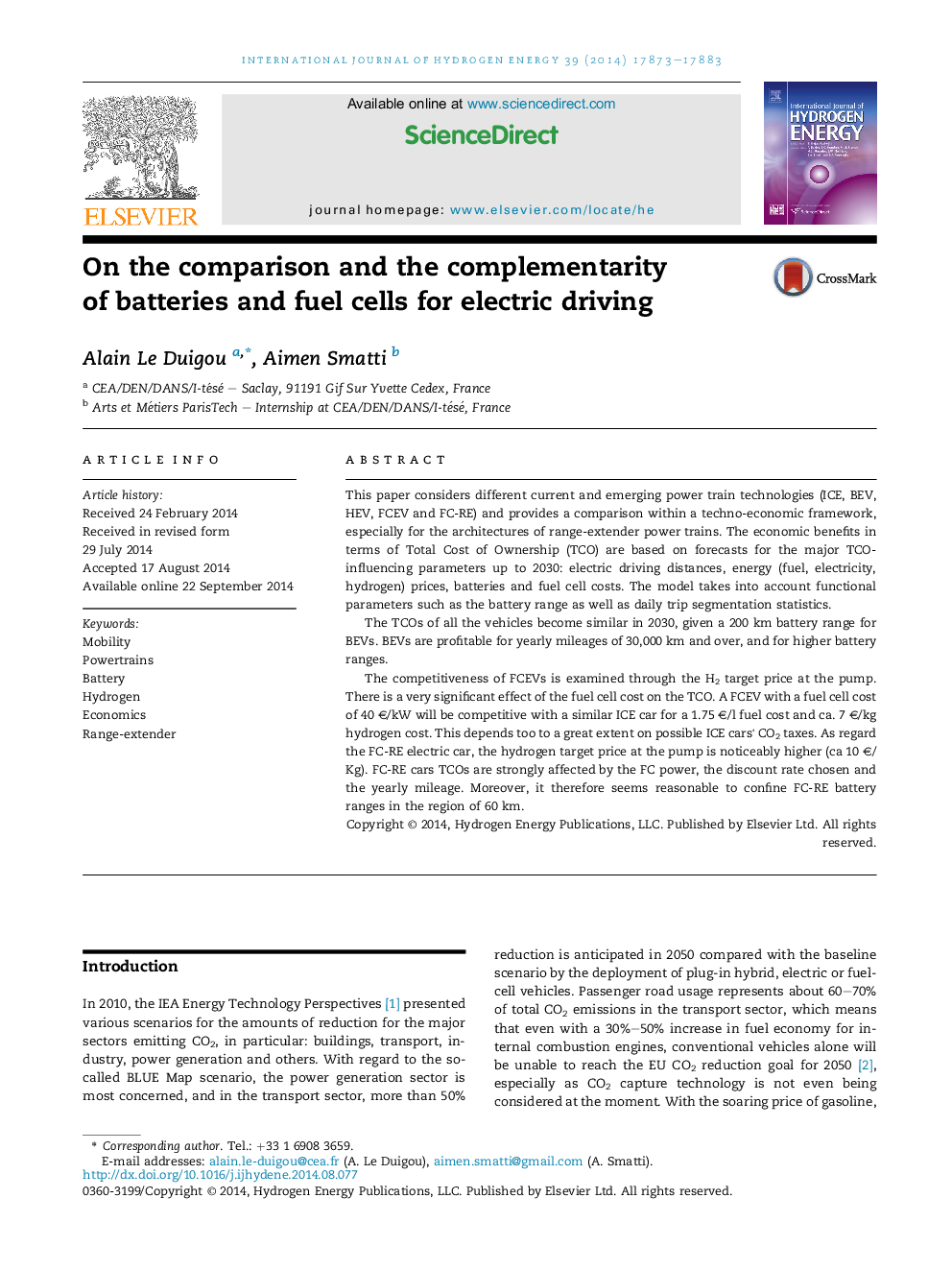| کد مقاله | کد نشریه | سال انتشار | مقاله انگلیسی | نسخه تمام متن |
|---|---|---|---|---|
| 1271884 | 1497478 | 2014 | 11 صفحه PDF | دانلود رایگان |
• Daily trips statistics are considered to analyze the profitability of electric cars.
• The TCOs of all the powertrains become similar in 2030.
• BEVs are profitable for battery ranges higher than 250 km.
• FCEV: hydrogen target price at the pump is ca. 7 €/kg, 10 €/kg and more for FC-RE car.
• An optimal value of battery range may be ca. 60 km for FC-RE cars.
This paper considers different current and emerging power train technologies (ICE, BEV, HEV, FCEV and FC-RE) and provides a comparison within a techno-economic framework, especially for the architectures of range-extender power trains. The economic benefits in terms of Total Cost of Ownership (TCO) are based on forecasts for the major TCO-influencing parameters up to 2030: electric driving distances, energy (fuel, electricity, hydrogen) prices, batteries and fuel cell costs. The model takes into account functional parameters such as the battery range as well as daily trip segmentation statistics.The TCOs of all the vehicles become similar in 2030, given a 200 km battery range for BEVs. BEVs are profitable for yearly mileages of 30,000 km and over, and for higher battery ranges.The competitiveness of FCEVs is examined through the H2 target price at the pump. There is a very significant effect of the fuel cell cost on the TCO. A FCEV with a fuel cell cost of 40 €/kW will be competitive with a similar ICE car for a 1.75 €/l fuel cost and ca. 7 €/kg hydrogen cost. This depends too to a great extent on possible ICE cars' CO2 taxes. As regard the FC-RE electric car, the hydrogen target price at the pump is noticeably higher (ca 10 €/Kg). FC-RE cars TCOs are strongly affected by the FC power, the discount rate chosen and the yearly mileage. Moreover, it therefore seems reasonable to confine FC-RE battery ranges in the region of 60 km.
Journal: International Journal of Hydrogen Energy - Volume 39, Issue 31, 22 October 2014, Pages 17873–17883
